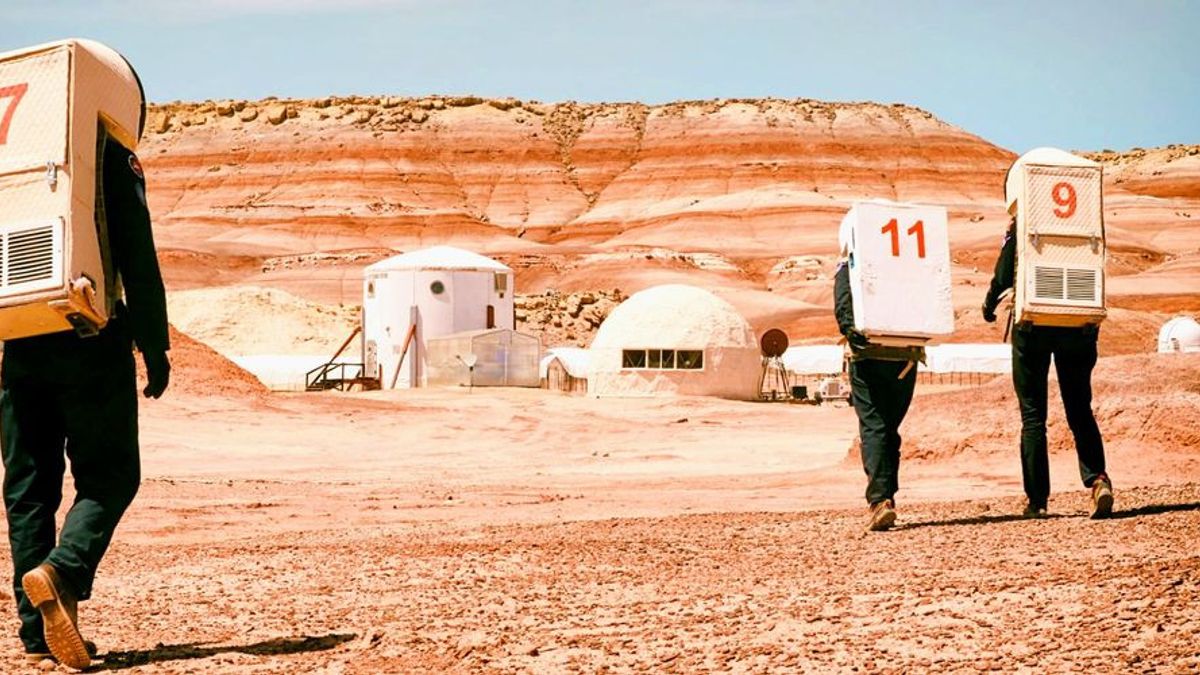JAKARTA - In the middle of the Utah desert, a crew in full astronaut gear goes for a walk as part of a months-long isolation experiment to research life on Mars. But the isolation simulation was ruined by some tourists and drones flying in without permission.
The Mars MDRS Desert Research Station is owned and operated by the Mars Society. It hosts eight months of professional scientists, engineers and students to train and research in Martian extreme isolation.
Simulation is an important part of space exploration. In simulations for Mars, habitats are usually built in remote locations where the terrain matches that of the Red Planet. Crew members slept, ate, and conducted experiments for long periods of time without ever leaving the compound. To go outside, they must wear spacesuits that are sometimes equipped with cameras, microphones and self-contained breathing systems.
The director of Mars Desert Research Stations MDRS said that tourists and drones have become a real problem for Mars habitability research. Over the past few weeks, the station has been busy putting up “No Skipping” signs, posting “Not Open to the Public” disclosures on their website, social media, and even on their Wikipedia page.
“On the internet and in the nearby town of Hanksville, people are saying we are open to the public and this station is accessible to everyone. I have spent more time driving people off properties than welcoming them,” said MDRS Director Dr. Shannon Rupert.
Dr. Rupert added that while some tourists looked confused and disappointed, others had crossed the line to the point where he had to call the police.
Dr. Rupert said the main challenge is social media where “misinformation spreads like wildfire.” People have posted photos of MDRS with coordinates encouraging others to visit the station.
Drone flights that are barred from flying over private property and trespassing are illegal, but tourists wonder about the station, gazing into the building or just sitting in the hills outside the airlock waiting for “astronauts” to pick up their daily EVA.
The MDRS campus includes six structures. Its habitat is where crew members live and work, and airlock tunnels are connected to other structures. The station has many rooms, including the Robotic Observatory and the Musk Observatory.
There is also the GreenHab where conventional and aquaponic research is carried out, the Science Dome which houses the solar system control and laboratory, and the RAMM, where rover ATV and engineering research takes place. The station has been in operation since 2001, and more than a thousand researchers have undergone the program.
MDRS says their facility is unlike any other Mars simulation project because the geological features in Utah are similar to those on Mars. Humans making future trips to the Red Planet will experience a level of isolation that humans have never experienced before.
MDRS focuses its research on mechanisms for coping with this experience. MDRS urges the public to stay away from the station. Months and even years of their labor are wasted if Mars simulations become a tourist attraction.
The English, Chinese, Japanese, Arabic, and French versions are automatically generated by the AI. So there may still be inaccuracies in translating, please always see Indonesian as our main language. (system supported by DigitalSiber.id)








